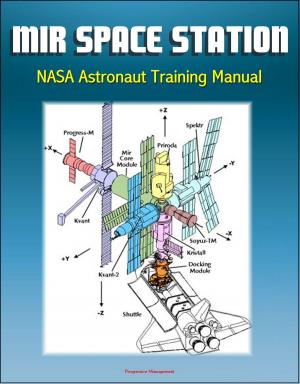Orion: America's Next Generation Spacecraft - A Look at the Design, Development, and Testing of NASA's Multi-Purpose Crew Vehicle (MPCV) for Deep-Space Manned Exploration Flights
Nonfiction, Science & Nature, Technology, Aeronautics & Astronautics, Science, Physics, Astrophysics & Space Science| Author: | Progressive Management | ISBN: | 9781310674549 |
| Publisher: | Progressive Management | Publication: | August 27, 2014 |
| Imprint: | Smashwords Edition | Language: | English |
| Author: | Progressive Management |
| ISBN: | 9781310674549 |
| Publisher: | Progressive Management |
| Publication: | August 27, 2014 |
| Imprint: | Smashwords Edition |
| Language: | English |
This NASA publication provides a concise overview of the Orion Multi-Purpose Crew Vehicle project. As the flagship of our nation's next-generation space fleet, Orion will push the envelope of human spaceflight far beyond low Earth orbit. Orion may resemble its Apollo-era predecessors, but its technology and capability are light years apart. Orion features dozens of technology advancements and innovations that have been incorporated into the spacecraft's subsystem and component design. To support long-duration deep space missions of up to six months, Orion engineers developed a state-of-the-art spacecraft with unique life support, propulsion, thermal protection and avionics systems. Building upon the best of Apollo and shuttle-era design, the Orion spacecraft includes both crew and service modules, a spacecraft adaptor, and a revolutionary launch abort system that will significantly increase crew safety. Orion's crew module is much larger than Apollo's and can support more crew members for short or long-duration spaceflight missions. The service module is the powerhouse that fuels and propels the spacecraft as well as the storehouse for the life-sustaining air and water astronauts need during their space travels. The service module's structure will also provide places to mount scientific experiments and cargo. Orion is capable of supporting low Earth orbit missions or transporting astronauts on a variety of expeditions beyond low Earth orbit - ushering in a new era of space exploration. Orion can carry astronauts to the International Space Station, deliver cargo for resupply, and remain on orbit under its own power supply to serve as an emergency escape vehicle for the crew onboard.
This NASA publication provides a concise overview of the Orion Multi-Purpose Crew Vehicle project. As the flagship of our nation's next-generation space fleet, Orion will push the envelope of human spaceflight far beyond low Earth orbit. Orion may resemble its Apollo-era predecessors, but its technology and capability are light years apart. Orion features dozens of technology advancements and innovations that have been incorporated into the spacecraft's subsystem and component design. To support long-duration deep space missions of up to six months, Orion engineers developed a state-of-the-art spacecraft with unique life support, propulsion, thermal protection and avionics systems. Building upon the best of Apollo and shuttle-era design, the Orion spacecraft includes both crew and service modules, a spacecraft adaptor, and a revolutionary launch abort system that will significantly increase crew safety. Orion's crew module is much larger than Apollo's and can support more crew members for short or long-duration spaceflight missions. The service module is the powerhouse that fuels and propels the spacecraft as well as the storehouse for the life-sustaining air and water astronauts need during their space travels. The service module's structure will also provide places to mount scientific experiments and cargo. Orion is capable of supporting low Earth orbit missions or transporting astronauts on a variety of expeditions beyond low Earth orbit - ushering in a new era of space exploration. Orion can carry astronauts to the International Space Station, deliver cargo for resupply, and remain on orbit under its own power supply to serve as an emergency escape vehicle for the crew onboard.















